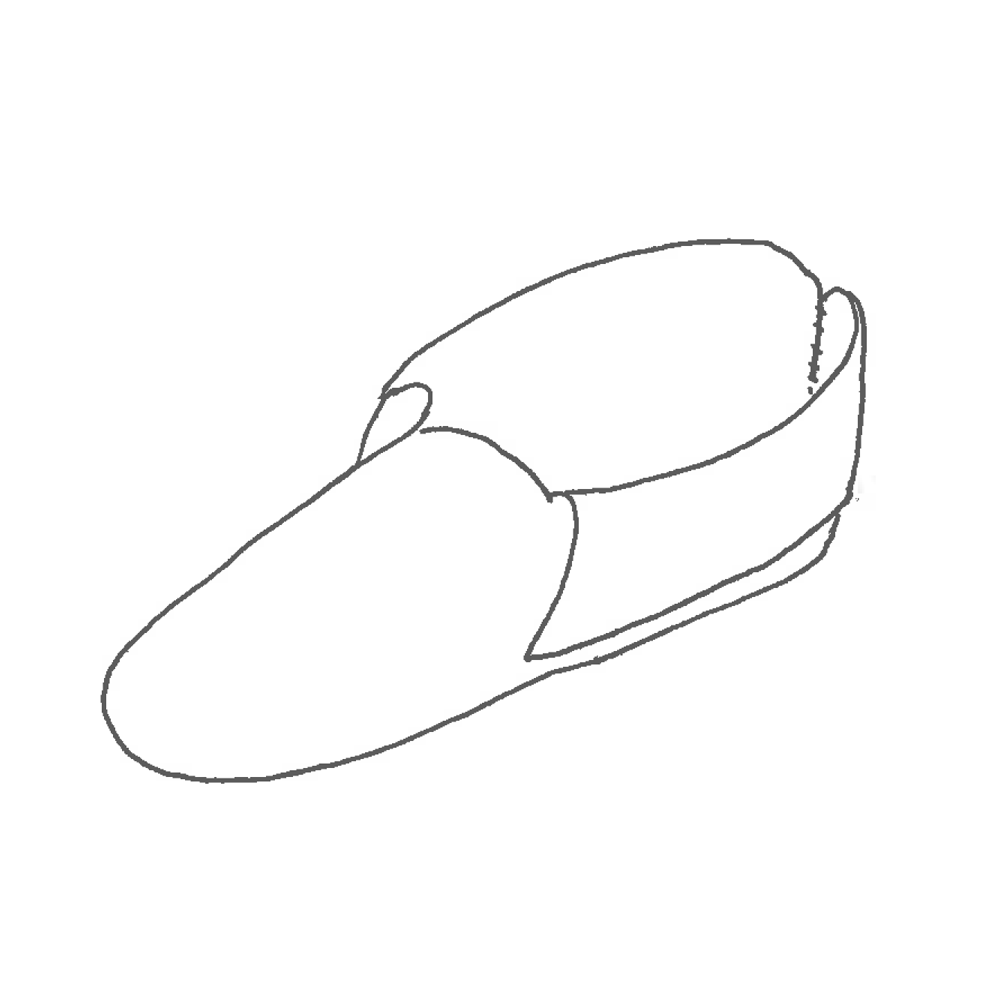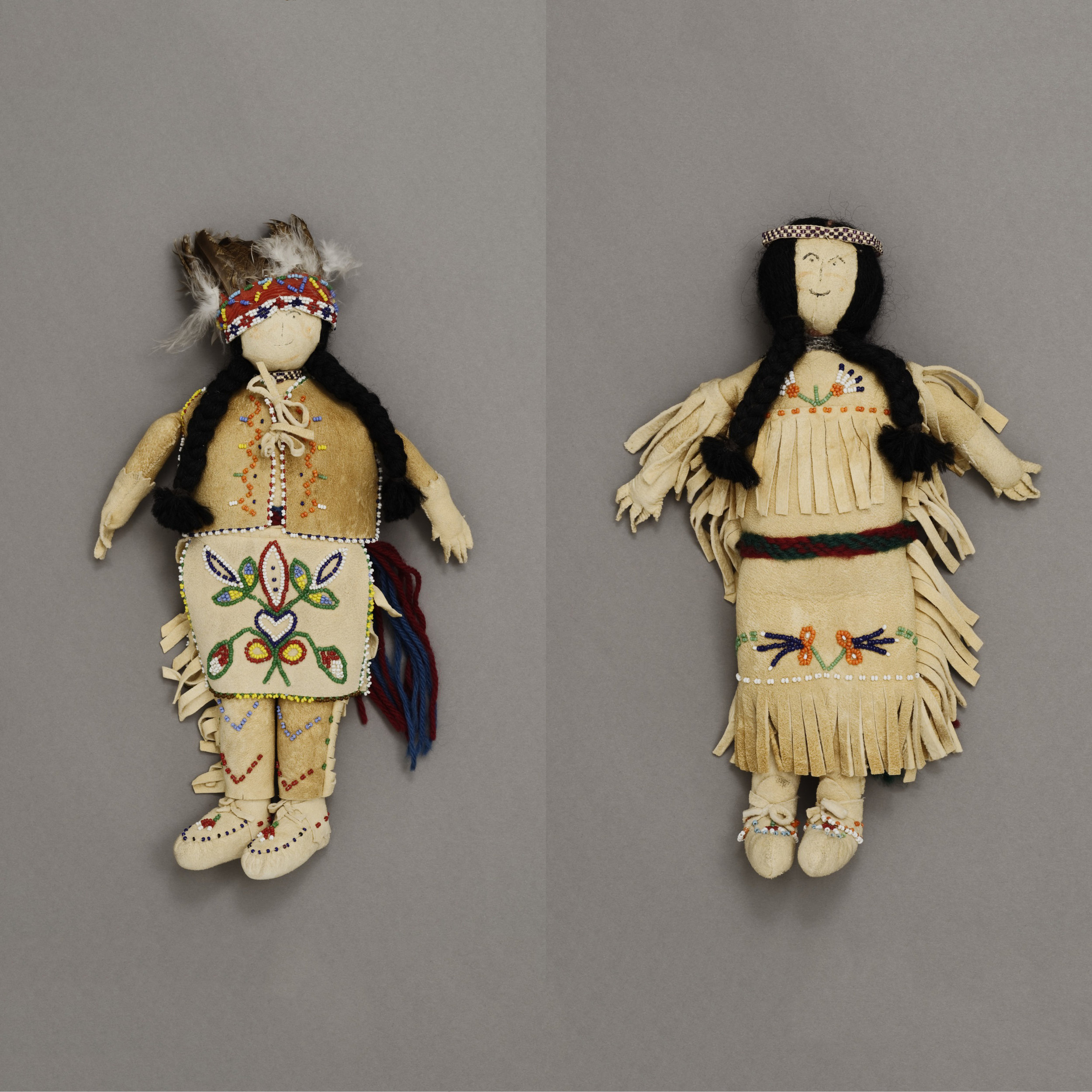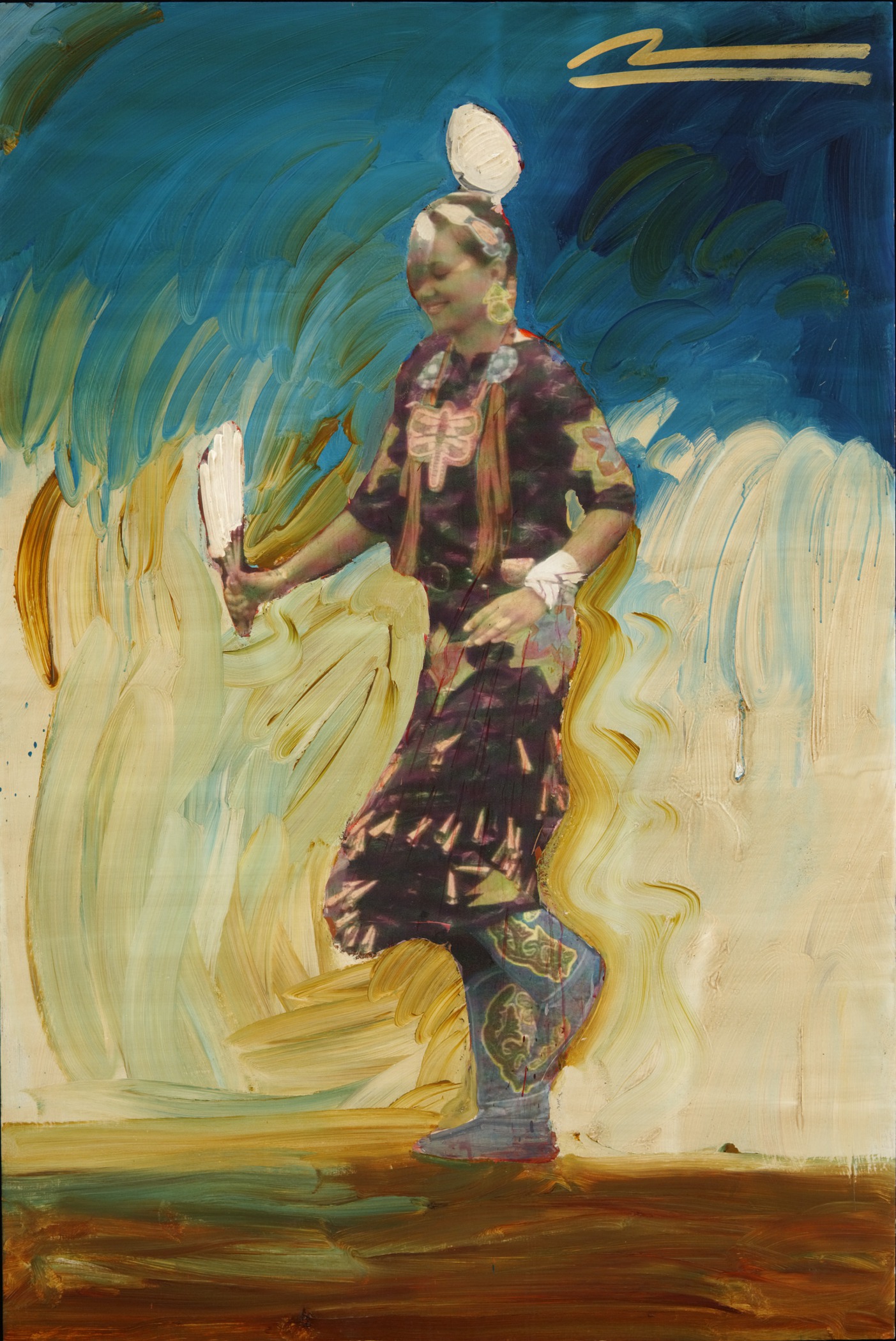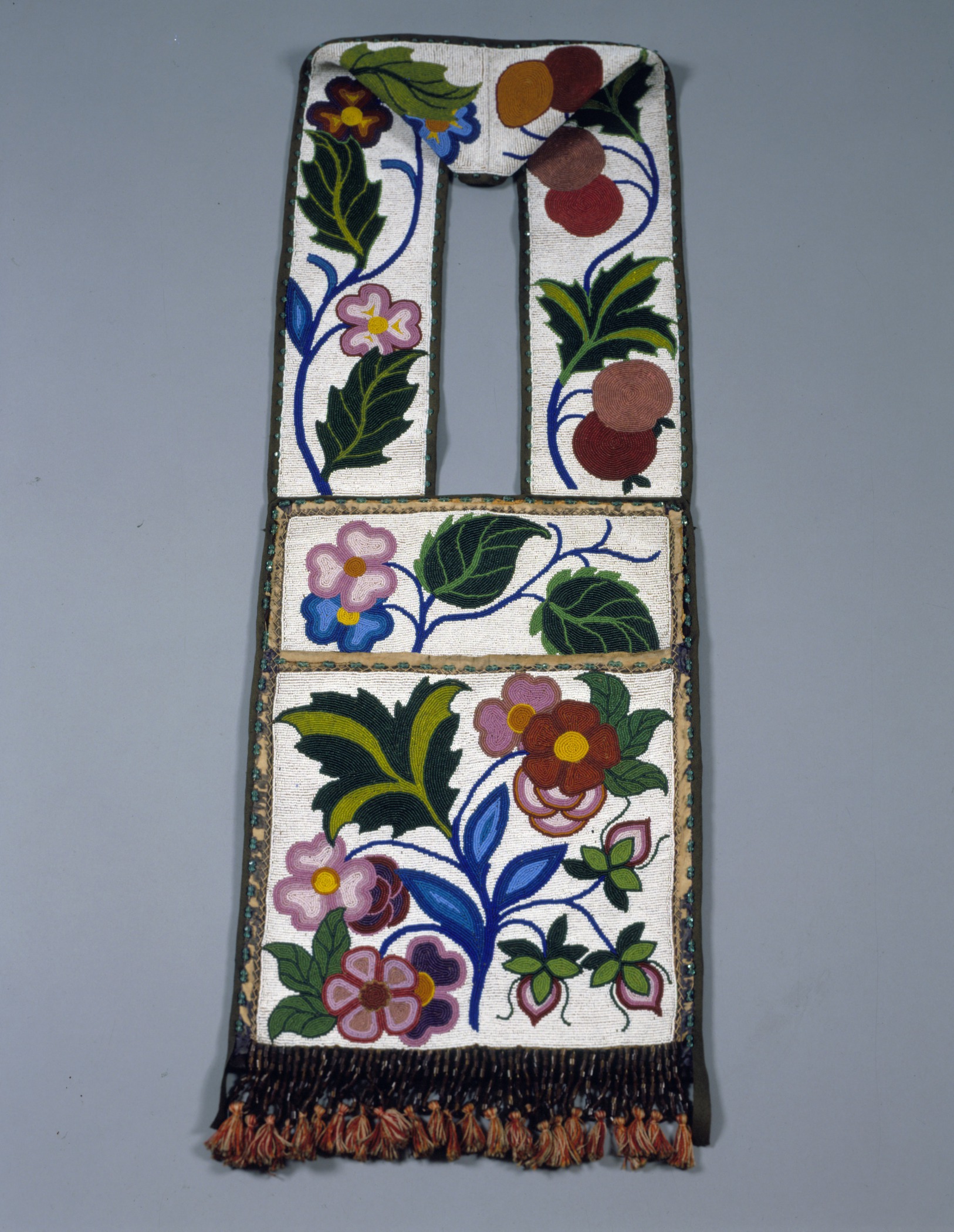Seneca
Moccasins
- About 1820
- Deerskin, porcupine quills, dye, sinew, ribbon, and thread
- 2 3/8 × 9 7/16 × 3 15/16 in.
Hood Museum of Art, Dartmouth College: Gift of Robert G. Chaffee, Class of 1936; 159.14.14400
Moccasins, soft leather shoes without a separate heel, are a Native American invention. Most native groups of North America wore moccasins to protect their feet from harsh surfaces and cold or wet weather. The form has endured. Native Americans still create and wear moccasins today, both for everyday use and as regalia. They have also become a standard type of slipper and shoe for people all over the world.
The design, decoration, and construction of these rare Seneca moccasins from 1820 reflect a type of moccasin made before the arrival of Europeans. The Seneca artist made each of these moccasins from a single piece of buckskin and decorated them with dyed porcupine quills. Soft-soled moccasins, like these, were well suited for traveling through the forests of the Northeast.
Explore the Object
Historically, women made moccasins from tanned leather and sinew. As the diagram shows, the creator of this moccasin cut a single piece of leather into an arched shape. She brought up the sides, sewing them together along a central seam above the foot and behind the heel using sinew (thread made from tough, fibrous tissue). She then pounded the seams so that they would lie flat. She folded down the flaps of leather at the ankle to create a cuff.
The artist decorated these moccasins with porcupine quills dyed orange and green. The shapes along the side of the vamp, or top of the moccasin, are geometric shapes called rhomboids.
Organic shapes on the outer edges of the shoe and the cuffs suggest leaves, flowers, and water.
In the strip covering the central seam, the maker used a zigzag stitch, anchoring a dyed, flattened porcupine quill with a stitch of sinew or thread, and then folding it back and forth to fill the space. At each fold, she anchored the porcupine quill with another stitch. She inserted additional porcupine quills where the previous quill ended.
Activity: Matching Moccasins
The construction and decoration of moccasins varies from people to people. So distinctive are some moccasin styles that long ago a skilled tracker could tell the tribe of the wearer by his footprints.
See if you can match the outlines to the shapes and cuffs of each pair of moccasins made by different Woodlands cultures. (Answers can be found at the bottom of the page.)
learn more
Northeast Woodlands: Clothing & Regalia
Answers to Moccasin Matching Game:
Moccasin 1-Outline C: Seneca, moccasins, about 1820. Deerskin, porcupine quills, dye, sinew, ribbon, and thread , 2 3/8 × 9 7/16 × 3 15/16 in. Hood Museum of Art, Dartmouth College: Gift of Robert G. Chaffee, Class of 1936; 159.14.14400.
Moccasin 2-Outline A: Anishinaabe (Chippewa/Ojibwa), moccasins, about 1900. Native-tanned hide, glass beads, wool cloth, cotton cloth, cotton binding tape, wood yarn, and thread, 4 15/16 × 10 7/8 × 4 3/16 in. Hood Museum of Art, Dartmouth College: Bequest of Frank C. and Clara G. Churchill; 46.17.9877.
Moccasin 3-Outline B: Mohawk, moccasins, about 1890. Native-tanned hide, velvet, glass beads, wool cloth, cotton cloth, metal sequins, paper, ochre, and thread, 2 9/16 × 12 3/8 × 2 3/4 in. Hood Museum of Art, Dartmouth College: Gift of Eileen K. Barfuss, Class of 1984; 986.21.26712.











